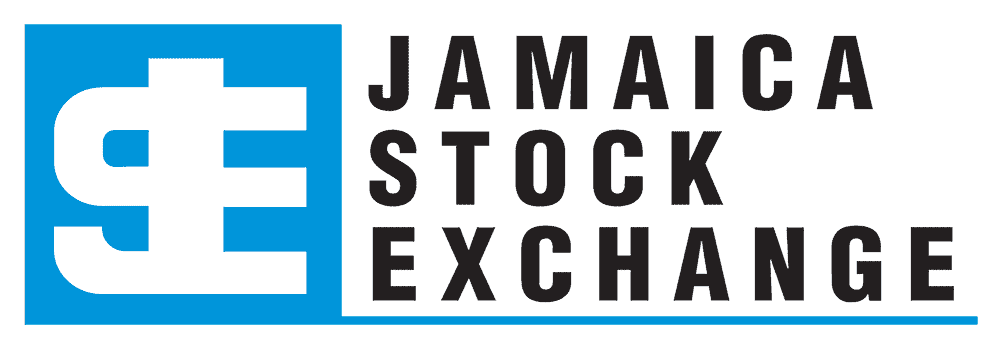KEYNOTE ADDRESS
by
THE MOST HONOURABLE EDWARD SEAGA
at
THE JAMAICA STOCK EXCHANGE’S INVESTMENT AND CAPITAL MARKET CONFERENCE
AT ROSEHALL RESORT AND COUNTRY CLUB MONTEGO BAY
JANUARY 27, 2009
on
“THE PARALYSIS OF HIGH INTEREST RATES”
Introduction
The Jamaica Stock Exchange is one of the outstanding success stories of the post-Independence period. After an auspicious start in the 1960s, it has experienced internal shocks in two of the five decades of operation which could have cost it much of the public confidence needed for its growth and survival. But it did not succumb. It rallied and resumed its growth path.
It reached its zenith when in the mid 1980s the National Commercial Bank and the Caribbean Cement Company were divested by government. This increased the numbers of holders of stock of companies listed o the exchange from 3,000 to some 40,000. Its base for operation was strengthened with these expansions.
It underwent further strengthening with its modernization programmes which established the Jamaica Central Securities Depository to provide purchasers with a sense of security in trading.
Another leap forward is now to be taken in the establishment of a Junior Stock Exchange. This is a far reaching step to attract smaller traders and investors which undoubtedly will boost the exchange to new heights.
In all of their varied experience the JSE has always been served by staff and management who were outstanding and on whose shoulders rested much of the strain to build the JSE into one of the most outstanding successes of the new institutions of the post-Independence period.
Our gratitude and appreciation go to the exemplary staff and management of the JSE.
We are all particularly cognizant of course of the role and purpose of the investment and Capital Market Conference in which we are here to participate. As an annual event it is without doubt the premier conference on financial matters; it is much awaited by leaders of the financial sector, but no more in any previous year than this year when the timing is perfect for discussion on the financial hazards of the period. Again, the JSE has to be highly commended along with their supporting partner for the event Oppenheimer, for makings this timely conference possible
The Paralysis of High Interest Rates
The Independence period in Jamaica in 1962 was the foundation for the most optimistic mood ever enjoyed by Jamaicans. The uncertainties of the West Indies Federation were past. No other bleak problem had surfaced. The climate was favourable for venturing into appealing areas of development. The air was filled with the sweet sound of Jamaica’s own newly created popular music. A Jamaican girl topped the international charts with her rendition of “My Boy Lollipop”. Another was chosen as the most beautiful woman in the world, “Miss World”. All of this happened in the first year of independence showering the country with pride.
It was a time when the status of independence was being spelled out in doing and achieving on our own the things we wanted to do. Among the most active pursuits was the search for new investment. This was different from the previous periods of waiting for investment. The manufacturing of import substitutes was in vogue. Anyone with some capital could industrialize by importing equipment and establishing a production unit. Tax benefits were liberal, including the use of import tariffs to discourage the importation of competing goods. What more could be desired! The answer was capital.
In the year of Independence, the recently established Bank of Jamaica created a small unit at the Bank to operate as an exchange to trade in the equities of listed companies. There were 17 such companies at the beginning. By 1969 when the Jamaica Stock Exchange was established, the number of companies had doubled to 34. It was at that
time that it began to receive an unexpected boost in the quality and diversity of its listed companies.
In 1967, I was appointed Minister of finance after the death of Sir Donald Sangster, Prime Minister and Minister of Finance. I decided to begin the new and daunting assignment by tackling a fundamental weakness in the financial system. Virtually all the institutions in the country in banking and life insurance were foreign owned. As a consequence, savings and life insurance premiums were not under the control of Jamaican owned institutions creating the pool of capital necessary for Jamaican development programmes. Much of the profits were transferred to parent companies abroad where they were available for use. Even the government was dependent on the goodwill of these institutions to invest in public projects in Jamaica. Surely this would be a severe handicap to Jamaican investment needs and aspirations.
I resolved to transform the financial landscape, but there was an important consideration in taking this route. I was still in my thirties. The banking and insurance group was from a solid international background of financial repute and strength. This was a re-run of David and Goliath using strength of wealth and status as a protective shield. What was worse, there was no certainty that I would get the backing of Cabinet if the financial group threatened to retaliate. My approach had to be oblique, not direct, and I would have to proceed alone without seeking any approval or attracting any publicity.
I started with the banks. I approached the three major Canadian banks, individually. Would it not be an attractive step if some equity from the wholly-owned foreign enterprise could be offered to Jamaicans on the Jamaica Stock Exchange on its establishment, I queried? Surely the banking public would endorse and patronize any bank which in this particular period of heightened awareness of Jamaicanisation would take this welcome step, I ventured. Which bank would be the first to reap the popular public acclaim, I asked rhetorically? The Bank of Nova Scotia was the first to see not only the public relations value of this positive spin, but the negative reactions if this patriotic approach was rejected. It was, in effect, an offer which could not be refused.
The BNS response was to establish a local subsidiary with a local board of directors comprised of Canadian and Jamaican businessmen of high repute. The new subsidiary, the Bank of Nova Scotia Jamaica Limited, would then offer a significant bloc of shares to be listed on the Jamaica Stock Exchange. The other Canadian banks followed suit.
This success enable
d me to reveal the result of the Jamaicanisation strategy which was achieved not by force but by moral suasion. Cabinet gave its endorsement and positive reception which enabled me to take the next step: Jamaicanisation of the life insurance industry.
A meeting of all the main players was held in Toronto, where I could address the industry representatives. There was some strain evident at the beginning, which is the risk taken when negotiating with a group. But when I spoke to benefits to be reaped in patronage from Jamaicans by Jamaicanisation, allowing Jamaicans to enjoy a sense of ownership, the frost began to thaw. The outcome was that local representatives were advised, after the companies had given consideration to the proposal, that they would sell their entire operations to Jamaicans rather than enter into joint ventures. This was far more than expected.
This enabled the programme of Jamaicanisation to be completed in a relatively short period of transformation with substantial Jamaican ownership of the financial sector where there was virtually none before. The Jamaica Stock Exchange soon boasted financial stocks in its listing which strengthened its diversity. The future, at this point in the golden decade of the 1960s, appeared to have glorious possibilities
Then came the 1970s and the introduction of democratic socialism, scornful of private capital. The buoyant Exchange plunged, wiping out the build-up of gains. Suffice it to say that during that traumatic period one share of the Gleaner Company was worth less than the cost of one copy of the Daily Gleaner newspaper.
Happily, the Jamaica Stock Exchange returned to a boom period in the 1980s and early 1990s.
This boom and bust experience was only one of other such cycles over the first twenty five years of the Stock Exchange. The meltdown of the financial sector in the mid-1990s, a dozen years ago, was another. The cost to the public treasury of the meltdown was $140 billion or 45% of GDP, making it the third worst financial collapse in recent world history, Argentina at 55% and Indonesia at 50% being the two worst. But with the impact of the present global crisis, the US economy has now become the top casualty.
History is now repeating itself in the advent of another episode in the boom and bust cycle. The current global crisis has been wreaking havoc on the New York and world stock exchanges. From the current plunge in stock prices, it is estimated that more than 50% of the asset value of stocks on the NY Exchange will be lost by the time this credit crisis is over. In the Great Depression of 1929-30, 90% of the asset value of listed stocks was wiped out on the New York Stock Exchange. Although the impact of the global recession on the Jamaican economy is not yet being fully felt, only time will determine how much worse is to come.
Already the rate of exchange is slipping having lost 14% in value over the past year. This is a result of the increasing demand for US dollars which, based on the conventional wisdom, can only be stemmed if the supply of Jamaican dollars is dried up by monetary policy measures, or the Jamaican dollar becomes too expensive so as to discourage the purchase of foreign exchange. In both cases, increased interest rates hold the key to cutting demand as the economy is forced to contract.
This strategy to compress the economy by driving up interest rates has several negative consequences:
– the cost of debt will increase;
– so will consumer and other prices;
– higher interest rates will attract investment away from the stock market reducing investment on the exchange;
– economic growth, which is already marginal, will falter and slide.
Fortunately, the recent new signing of loans from the World Bank, Caribbean Development Bank, Inter American Development Bank and the Bank of Nova Scotia to come, totaling US$533 million is enough to payout the overseas loan of US$200 million due in February, 2009, and provide a significant package of US$300 million liquidity to bail out hard pressed institutions which are unable to service foreign debt, or purchase new inputs. This should effectively stabilize the exchange rate over the near future. But there is still the daunting hurdle of meeting the foreign exchange requirement for the new financial year beginning in April 1, 2009. Failure to do so will result in a re-run of the present foreign exchange crunch and all the attendant horrors of increased interest rates, increased prices, increased debt and stagnation of economic growth as the exchange rate falls. This predicament has haunted the economy for 25 years except for the 1987-1989 period, when after a battle, with the IMF I took the bold step to peg the rate at J$5.50 equal to US$1.00 in 1987, creating the only window for significant economic growth over the previous dozen years.
Is this not a statement that instead of watching the economy slip and slide still further again, the prospects of a pegged exchange rate should be studied to determine if it can do for Jamaica what it has done in lifting all the economies in the English-speaking Caribbean to greater prosperity?
The only alternative to the pegged rate is to substantially increase inflows of foreign exchange earnings by establishing new export earning enterprises.
In the mid-1980s, after the economy had experienced three years of compression to severely cut expenditure, ending in 1985, an investment surge in export apparel production followed. With a pegged rate of exchange, it created the second highest period of growth to occur since Independence. But where is the new investment surge to increase foreign exchange inflows and at this time to close the foreign exchange gap on a sustained basis? Where is the next Spanish type investment bonanza? This does not exist, as far as is publicly known.
It is unlikely that the investment stimulus required to lift the economy will be a “Spanish” type or export apparel-type surge. In the absence of a new investment surge, the strangle-hold of high interest rates will have to be loosened to allow growth and prosperity. No where else in the English-Speaking Caribbean do lending rates exist of 20%, plus or minus a few points, with spurts of significant enough increases to jolt the entire economy. Small and medium sized businesses will never be able to expand, or be created on a meaningful scale to help to lift the economy out of its stagnation. Studies have indicated the vital importance of these unheralded smaller investments in lifting the economy and employment.
Two of the major banks enjoy extra-ordinarily high return on equity 28% and 30%. A 2004 Bank of Jamaica paper on, Interest Rate and Commercial Spreads in Jamaica, indicates an industry wide spread of 11.6% for Jamaican banks, the highest in the region. The paper notes “all the key operating ratios for the commercial banking industry in Jamaica fall short of international benchmarks. Operating cost, for instance as a proportion of total assets are twice as high as comparable institutions elsewhere.”
It is easy to blame the banks but government persists in issuing debt instruments at extraordinari
ly high rates which set the bar for the banking industry.
It is time to come to grips with this dilemma by thorough study and effective action. I believe lower interest rates will attract more customer response and could compensate for the reduced margins of the banks. An empirical study is needed to determine what steps could be taken.
The many years of super-profits gained from high interest debt instruments issued by government as monetary policy to stem demand for foreign exchange and stabilize the exchange rate, has created an unhealthy “Las Vegas” investment culture in Jamaica that no longer accepts moderate investment returns as sufficient. This led to Cash Plus and Olint being very attractive investment models. It reinforced a banking system, now structured on super-spreads with super-profits. Nowhere else in the English-speaking Caribbean does the banking system enjoy prohibitive lending rates as in Jamaica. These high rates are a great impediment to investment and, by extension, economic growth, because few investments can tolerate mega-rates.
The IDB loan of US$300 million to the private sector to relieve cash flow and foreign exchange debt is to be loaned by the Development Bank of Jamaica through the commercial banks. The results could be disappointing. The Banks are likely to maintain that the reduced spread offered for these loans are too small a margin of profit compared to the usual super margins. This has been the sad experience over the past 25 years. But there is a solution: include a stipulated percentage of such loans to replace other deposits in the prudential reserves held by banks in the BOJ, as approved securities. These deposits can then be loaned, providing an incentive for the banking system, as was done in the 1960s, to encourage agricultural loans.
In the absence of new and additional export earnings, the future of the economy will rest on growth in tourism, mining and remittances, precisely the three areas of vulnerability now under pressure from the global crisis. It will come back, therefore, to how the economy weathers this global disaster.
The global crisis is yet to hit the Jamaican economy. When it does, new pressures will arise and in the absence of an available and willing capital market for customary loans, the economy will take another step backward with devaluation, paving the way towards the waiting arms of the IMF.
The stock market in the meantime will be caught in another depression, as 25%
high-yield government bond issues attract capital from investing on the Exchange.
Is it not odd that while other countries are reducing interest rates, Jamaica is not? Is it not odd that while other countries are seeking economic expansion to grow their way out of the recession, Jamaica is contracting its economy? Something is wrong. The policy mix needs urgent review.





